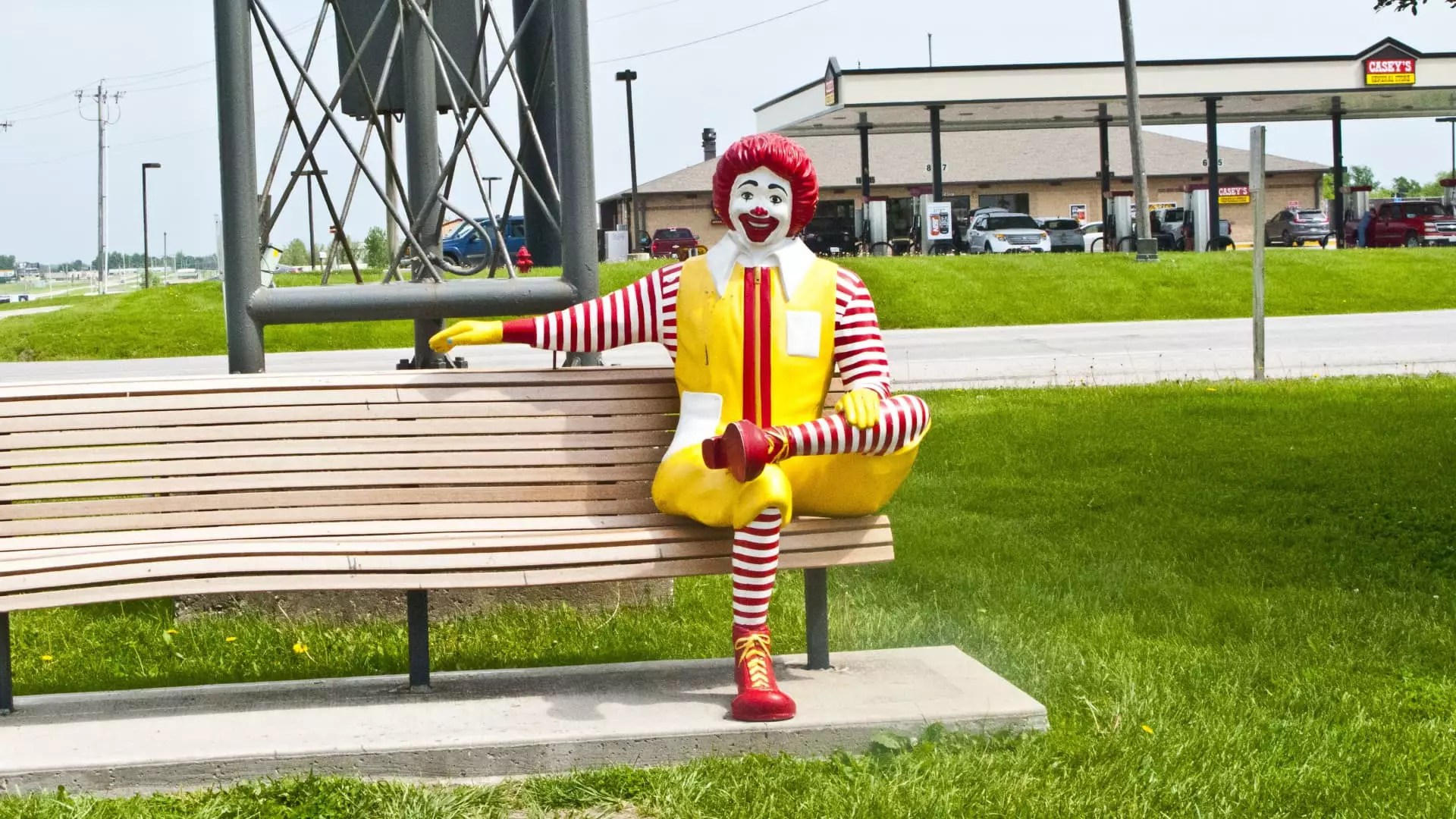The midday trading landscape often serves as a pulse check for the stock market, revealing how various companies are faring against a backdrop of broader economic indicators. Recently, a tapestry of corporate performances caught the attention of investors, with some stocks rallying while others faced turmoil. This article unravels the key shifts and trends observed in midday trading, analyzing the forces behind these movements and their implications for investors.
McDonald’s: Facing a Health Scare
One of the most notable downturns came from McDonald’s, which experienced a steep decline of over 5%. This drop can be attributed to an alarming announcement from the Centers for Disease Control and Prevention (CDC), linking an E. coli outbreak to its Quarter Pounder burgers. The report detailed ten hospitalizations and a tragic confirmed death related to the outbreak, prompting concerns about the company’s food safety practices. Such incidents can lead to lasting reputational damage and decreased consumer confidence, raising serious questions about McDonald’s ability to recover quickly from this setback. Investors’ unease suggests a cautious approach going forward, as they weigh the potential risks against the brand’s historical resilience.
Walmart: A Beacon of Stability
In stark contrast to McDonald’s, Walmart’s stock surged nearly 1%, achieving an all-time high despite a generally bearish market trend. With its stock performance up by 57% in 2024, outpacing the S&P 500’s 22% rise, Walmart exemplifies resilience during economic uncertainty. The company appears to be benefitting from its vast product assortment and the increasing preference for one-stop shopping. As consumers continue to prioritize value and convenience, Walmart is likely to remain a favored option, bolstering investor confidence and potentially setting a trend for other retailers to follow.
Boeing: Turbulence in the Skies
The aerospace industry is no stranger to ups and downs, and Boeing found itself in a precarious position after reporting its largest quarterly loss since 2020, amounting to over $6 billion. This staggering figure, compounded by a $4 billion loss in its commercial airplane division, has led to a near 3% decline in stock value. Faced with operational challenges, supply chain issues, and falling demand, Boeing’s recovery pathway appears steep. The company’s leadership will need to engage aggressively in damage control and strategic pivots to restore market confidence.
Amid the volatility, education technology company Stride emerged as a standout performer, witnessing a 33% surge in its stock value. Stride’s latest fiscal first-quarter results—reporting $40.9 million in net income, a remarkable leap from the previous year’s $4.9 million—illustrate the company’s ability to tap into the rapidly growing edtech sector. Investors seem optimistic about Stride’s trajectory, driven by increasing demand for online education solutions. This growth reflects a broader trend as educational institutions and families adapt to modern learning methodologies.
While some companies flourished, Enphase Energy saw its stock tumble nearly 13% after reporting lower-than-expected earnings. The company’s adjusted earnings per share of 65 cents and revenue of $380.9 million fell short of analysts’ expectations of 77 cents and $392 million. This underperformance may raise concerns about the scaling of operations and meeting market demand, particularly as investors grow increasingly vigilant regarding profitability in the competitive renewable energy sector.
Coca-Cola faced a downturn of 2% following guidance suggesting that currency fluctuations could hamper future results. Nevertheless, the beverage giant managed to outperform estimates for its third-quarter earnings, highlighting its robust business model. Investors, while cognizant of potential headwinds, might still see Coca-Cola as a reliable stock with the power to weather economic storms. The company’s established brand and international reach may cushion its performance amidst turbulent currency environments.
As we parse through the midday market updates, it is clear that the trading environment is a mixed bag, teeming with both opportunity and risk. Companies like Walmart and Stride showcase exceptional resilience and adaptability in changing markets, while others like McDonald’s and Boeing underline the vulnerabilities inherent in their sectors. Investors must carefully consider these dynamics, making informed decisions that account for both short-term volatility and long-term growth potential. Overall, the market’s performance serves as a compelling reminder of its unpredictable nature, where fortunes can shift rapidly based on industry developments and broader economic factors.


Leave a Reply